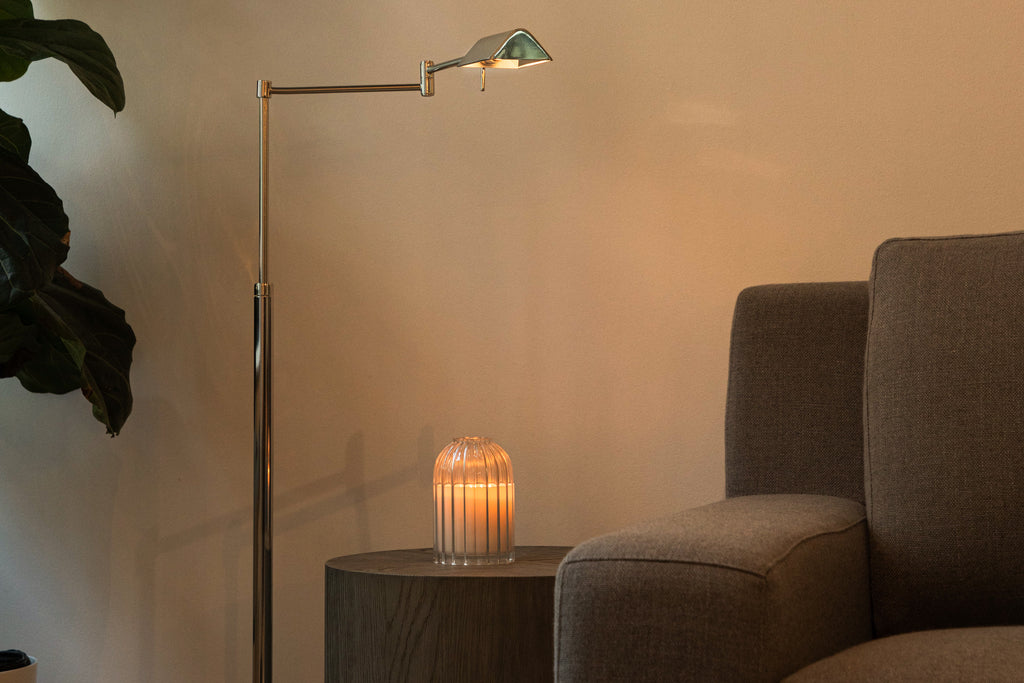
While there is nothing like the ambiance of a soft flickering candle, the flames may pose the risk of fire if not practiced with some guidelines in mind.
We will explore some helpful tips that will make your candle burning experience even safer.
Never Burn A Candle to the End
Candles are not meant to be burned to the end. The combination of wax and the wick help create a steady flame. When the wick reaches the bottom of a container candle, the flame is unsafe and unstable. This can cause the vessel to overheat, shatter, and may even cause a fire. Although borosilicate glass is able to withstand high heat, candle vessels are not made with the same level of thermo-resistance.
Cease burning when there is still a significant amount of wax left and repurpose the vessel and wax of your container candle. Leave at least a 1/2 inch of wax left in the jar or 2 inches in a pillar candle to avoid unsafe and extreme temperatures which may affect the candle container and your wood base.
Keep Candles Away from Flammable Materials
Candles may catch wind and start fires. It’s best to keep your candles at least 1 foot away from walls as the heat from the flame may leave a mark.
It’s also advised to keep your candles away from drafts, furniture, drapes, bedding, carpets, books, paper, and other flammable decorations. Use an open cloche candle holder to keep it safe, avert drafts, and prevent fire from transferring to other surfaces.
When burning more than one candle, ensure that there is at least 6 inches of space between each candle.
Burn Your Candles for 3-4 Hours at a Time
Candles should not be burned for more than 3 to 4 hours at a time. The longer the candle burns, the bigger the negative effect on the wick. When a candle burns for more than the recommended time, the wick begins to form a mushroom shape which increases the amount of carbon gas and soot emitted.
Once you are ready to extinguish your candle, you can use a wick dipper to put the flame off. This way, you not only extinguish the flame, but you also re-center the wick and prime it with wax. When you are ready to re-light your candle, be sure to trim the wick to at least ¼ inch. This will ensure a steady and clean burn.
Use a Candle Snuffer
Blowing out a candle can spread the flame towards flammable material such as curtains, drapes, furniture, or even books and magazines. Using a candle snuffer helps contain and extinguish the flame without the chance to start a fire. Using a candle snuffer also helps prevent wax from splattering, which is common mostly when blowing out taper candles.
Do Not Use Candles in a Power Outage
Avoid using candles during a power outage and especially if you are using them as a source of light when looking for items or fueling equipment such as a lantern. Opt to use a flashlight or battery-operated candle.
As always, remember to keep an eye on your candles especially when children or pets may have access to them.
By following these simple safety practices and using the right accessories, you can enjoy the cozy ambiance and fragrant atmosphere provided by your candles with peace of mind.






















